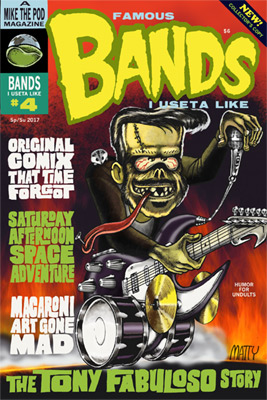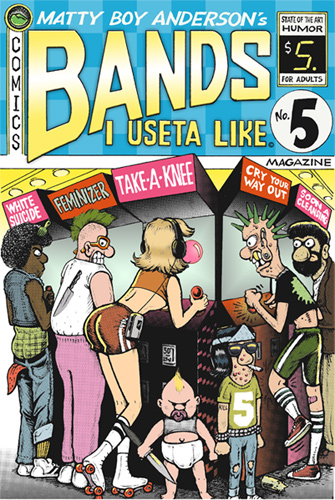In the early 1980s, video games were simple in concept, much like the “game apps” on phones nowadays. At heart, they were demonstrations of your skills with a joystick, paddle, or “track-ball” controller, performing one or more challenges. Eating all the dots, or climbing a scaffold to defeat a giant ape, to cite a couple of well-known examples. Navigating a maze while being pursued by killer robots. Killing a centipede, segment by segment. Swinging on vines over bottomless pits.
Or, flying planes into buildings. For fun!
Activision was a major player in the early Cartridge Wars. Look at the box above; every one was a different color, with an illustration that aggrandized the boring game graphics with rainbows and clean lines. With the rounded-corner frame, it looks like a futurist reinterpretation of Art Nouveau. I’m being completely serious; Atari 2600 cartridges were, in general, things of beauty in their packaging. Both Atari and Activision utilized rainbow motifs, as did Imagic, with their gorgeous chrome boxes. Shoplifting wasn’t an issue yet, so the boxes were small and easy to open.
Another, more well-known beaut from Activision, still in the shrink wrap:
If you expected visuals like that from the game, you wouldn’t be disappointed. This was a very canny design decision by Activision, which at the time, was extremely people-oriented; programmers were rewarded with a credit on the packaging. That’s how we knew at nine years old that River Raid, one the best and most brutal games for the 2600, was created by a woman. A woman!! Them feminists don’t tell you about that, do they? That’s because feminists hate video games by nature!!!
There were Activision games I was a wizard at, and there were games that pushed me into a joystick-smashing tantrum. It wasn’t autism. I’m not autistic, as far as I know. No medical professional has ever mentioned it. I probably have a summer home somewhere on that particular spectrum, however.
As kids, we all loved Frogger, placing it alongside Pac-Man and Donkey Kong as a sort of early holy trinity. Many fledging game companies (including Parker Brothers) raced to port versions of Frogger for the various home game systems, which had come to include ColecoVision by this point. Before that, we had Freeway, a Frogger clone with a chicken instead of a frog. I mean, that makes more sense, right? A chicken crossing a road?

The rounded corners evoke the corners of the average person’s TV set. Right-angle corners are a 21st-century deal.
However, Freeway had a crippling handicap; the chicken could only move up and down. Not sideways. This was okay… once you got used to it. If you went from Frogger to Freeway, you might think your joystick was busted. You might whip the family into confusion and hooting apoplexy. There might be red-faced drives through the sleet to Crazy Eddie, a hasty purchase of a replacement controller that isn’t quite the same, and then more hooting confusion when the goddamn chicken still only goes up and down. That’s enough! We’re not going out again tonight! Off to bed with you!!!
Atari 2600 paddle controllers were notoriously fragile, so of course I broke more than one. Eventually my dad worked out how to fix them, like you would a guitar pedal. Same thing, different package. But two games spelled doom for many a paddle (and they only came in pairs, and you needed them to play PONG, for god’s sake); Atari’s Super Breakout, and Activision’s Kaboom.
I killed at Kaboom. A game where you foil a masked madman who drops bombs off a building.
You moved the paddle to control a stack of buckets and douse the falling bombs. The iconography is clean and looked terrific on any TV. Eventually the bombs fall so fast they’re impossible to catch, and you lose a bucket for every miss. Miss three bombs, and KABOOM!
That’s how “MAD” this Bomber is. He’s on the roof of the building, bombing the street below with increasing saturation, thwarting the efforts of those trying to rescue him. Either his explosives are too weak to damage the building, or he just doesn’t give a fuck. As a child, I hated him with such intensity that my face turned the color of his game box, and I saw silvery curlicues when I closed my eyes. This was around 1981- no one understood the possibility of unwinnable yet. Conceivably, someone could beat the game; there were patches rewarding it.
Again- how cool are those patches? To get one, you had to photograph your TV screen with your high score displayed. Your best bet was to use a Polaroid, if you had one, and you had to fiddle with the curtains and lights until nothing reflected on the screen, and take your best shot. If you managed to capture the score, you sent it off to Activision headquarters, and some months later you got a patch, right around the time you’re too chicken to iron it onto your school clothes.
I got one for Frostbite, which was a personal favorite of mine for years. It was kind of like Q*Bert, but with an arctic motif, where you hopped on moving ice floes. It was soothing in a way that other games weren’t, and you could “English” Frostbite Bailey’s movement in a way that was new for the time. You could “bend” his jumps from place to place with the joystick, while he hung in the air. It was amazing to experience firsthand. If you remember the literal leap in technology that Luigi innovated in Super Mario Bros. 2, you know what I mean. And look at this box!
I got the patch for Laser Blast, a monotonous saucer-to-tank shooter that everyone but me hated, and a friend got the one for Chopper Command, a decent and tough-as-nuts Defender reskin. I think I got the patch for Keystone Kapers, which was a fun cops-and-robbers game set in an old, multi-level department store. The graphics were a step up from Activision’s typical excellence; really pretty. (Of course, my favorite racing game was Activision’s Enduro, where you drive for so long the weather changes in the background. They knew how to decorate a cake back then.)
Here’s the game itself, showing Kop, robber, shopping carts, store merchandise like “cathedral radios” and toy planes, and a lovely sunset, indicating that the store is closed. At bottom is the “mallmanac”; a map displaying the locations of the player and opponent. It seriously reminds me of Chris Ware’s Jimmy Corrigan art.
Anyway… Barnstorming. It was hard to get, because it was early, like Freeway. As I later found out, it was kind of dull as a game. But something about it was intriguing. Maybe it was the terrific title. Maybe because it was a digital version of an actual pastime, from a century ago. A black lady did it and everything.
You can kind of do it in GTAV‘s flight school, but you only land planes in barns, and never actually storm them. Activision was there to cover all our flying-planes-through-buildings needs, back in 1982.
The sunrise in the distance made it feel like you were doing something dangerous early in the morning, and getting away with it. The windmills, birds and “spinning” propeller enhanced the sensation of flight and movement; the pilot’s scarf, a mere three pixels, flapped in the cold air current. Look how the barn’s roof and the fence are simply designed, but still convey basic depth. This was Steve Cartwright’s first game. He went on to program Frostbite, and my favorite shooter other than Galaga ’88; Megamania. That was the one where the star pilot ate too much ice cream and had a nightmare where he was attacked by tires, giant dice and cheeseburgers. Meaning, you fired upward at descending teams of enemies. Still, an extremely fun game.
I left out Stampede. I have no idea what my point was in this article, other than retro nostalgia. I mourn the loss of aesthetic cohesion in consumer culture. Everything successful in the early 1980s had this outsize sense of color to it; a sort of joy in the presentation of a product. You could recognize an Activision game at a distance, and get excited about what it might be. Look- a brown one on the shelf at Two Guys! Brown means cowboys!
Towards 1985, Activision capitulated to standard video game box art, with lush paintings and non-uniform type. Their original catalog became associated by proxy with the Great Videogame Crash of 1983, and they changed their aesthetics to compete with more companies on the shelves. Eventually home video games became realistic enough to make art like I’ve shown you look reductive as a representation. Remember how the Orange Box was received? That’s the closest you’ll get, and that was a long time ago, in technology years.





















You must be logged in to post a comment.